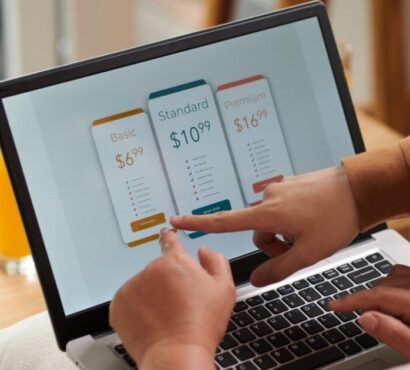Digital marketing continues to evolve, and two dominant players, Google Ads and Bing Ads (Microsoft Advertising), remain critical tools for businesses aiming to maximize their online presence. But with different audiences, features, and pricing models, how do you decide which platform is right for your business? In this guide, we’ll break down the strengths, weaknesses, and opportunities of Google Ads vs. Bing Ads from a 2025 perspective. From user demographics to ad performance and ROI, we’ll help you make an informed decision ideal for your goals.
Google Ads vs. Bing Ads: Key Features at a Glance
| Feature | Google Ads | Bing Ads (Microsoft Advertising) |
| Audience Reach | Largest search engine with ~92% global market share | Smaller reach (~8% global search share), but valuable niches |
| Demographics | Broader audience; younger, tech-savvy users | Older, more affluent user base with significant purchasing power |
| Cost per Click (CPC) | Higher average CPC due to competition | Lower CPC, offering more cost-efficient campaigns |
| Ad Placement | Google Search, YouTube, Display Network, Apps, and Gmail | Bing, Yahoo, MSN, AOL, and Microsoft Ecosystem (e.g., Xbox) |
| Targeting Options | Advanced AI-driven targeting and custom segmentation | Effective targeting, including LinkedIn profile integration |
| Conversions | High volume but varying quality depending on niche | Fewer conversions, but often higher purchase intent |
| Device Usage | Strong on mobile (Android dominance) | Strong on desktop (Windows OS dominance) |
| Budget Size Suitability | Best for larger budgets or highly competitive industries | Great for small businesses or those seeking niche audiences |
| Integration | Google Ads | Bing Ads |
| Analytics Tools | Google Analytics | Microsoft Clarity |
| Social Media Reach | YouTube | LinkedIn integration |
| Local Campaigns | Strong integration with Google Maps | Beneficial for Bing Places |
1. Reach and Audience Demographics
Google Ads: The Undisputed Giant
With 92% market share, Google Ads has unparalleled reach, supported by its dominance on both desktop and mobile devices. It’s ideal for businesses targeting a global audience or industries with a broad customer base. The users tend to be younger and more tech-savvy, making it especially valuable for industries like e-commerce, technology, and B2C services.
Bing Ads: A Strategic Underdog
Bing Ads may only account for about 8% of global searches, but that still translates to millions of daily searches. Plus, Microsoft primarily serves an older and more affluent demographic, often with higher spending power. Businesses targeting specific demographics—like senior citizens, enterprise professionals, or technology/software users—can benefit greatly here. Additionally, Bing tends to work better for niche industries like insurance, finance, and B2B markets.
2. Cost & Competition
Higher CPC on Google Ads
Google Ads is famously competitive, leading to higher average CPCs (Cost per Click). In 2025, industries like finance, law, and healthcare have CPCs exceeding $50 in some markets. While the platform offers a robust return on ad spend (ROAS), businesses with smaller budgets may struggle to compete in certain industries.
Cost-Effective on Bing Ads
Bing Ads offers a lower CPC, often 20-30% less than Google Ads. This makes it an excellent option for budget-conscious advertisers looking to make their dollars stretch further. It’s particularly valuable for small-to-medium businesses aiming for cost-efficient campaigns that can still deliver strong results.
3. Performance and ROI
Google Ads: High Volume, Fast Results
The sheer volume of traffic on Google means a well-optimized ad campaign can generate significant visibility almost instantly. However, the high competition often leads to diminishing returns for less-optimized campaigns. Additionally, Google’s AI-powered tools like Performance Max campaigns help automate and improve ad placements across its network.
Bing Ads: Quality Over Quantity
Though Bing has less traffic, it often delivers higher intent clicks and conversions. Bing users are often researching solutions on desktop devices, leading to larger cart sizes and higher life-time value (LTV). Its integration with LinkedIn targeting also allows businesses to reach decision-makers efficiently.
4. Targeting Capabilities: Who Wins?
- Both platforms offer advanced targeting, but with unique strengths:
- Google Ads:
- AI-driven audience segmentation.
- Better mobile app and video ad integration (e.g., YouTube).
- Remarketing and retargeting based on web activity.
- Microsoft Ads:
- LinkedIn Profile Targeting: Advertisers can target by industry, job title, and company.
- Superior desktop targeting due to Windows integration.
- Excellent for reaching niche or professional audiences.
5. Ease of Use and Features
Google Ads: More Robust Features
Google Ads remains the gold standard for platform functionality, featuring tools like automated bidding, detailed analytical insights, and broad integrations (e.g., Google Analytics). However, the wealth of features can feel overwhelming to beginners.
Bing Ads: Simplicity and Flexibility
Bing Ads offers a more user-friendly interface and simpler ad creation. Additionally, the availability of tools like automatic Google campaign imports ensures a streamlined setup for those transitioning from Google Ads. While somewhat less advanced, it remains an accessible and effective platform.
6. Integration Ecosystem
| Integration | Google Ads | Bing Ads |
| Analytics Tools | Google Analytics | Microsoft Clarity |
| Social Media Reach | YouTube | LinkedIn integration |
| Local Campaigns | Strong integration with Google Maps | Beneficial for Bing Places |
Google Ads offers a wider ecosystem, seamlessly connecting with Gmail, YouTube, and Google Analytics. By contrast, Bing excels in LinkedIn and desktop-focused integrations, benefiting B2B advertisers.
7. Budget Suitability
- Google Ads: Best for businesses with higher budgets or those in competitive industries requiring aggressive bidding.
- Bing Ads: Perfect for smaller budgets, startups, or businesses trying to target specific regions or demographics.
Conclusion: Which Platform Should You Choose?
In 2025, the choice between Google Ads and Bing Ads depends entirely on your business goals, audience, and budget:
- If you’re after scale, visibility, and advanced tools, Google Ads remains unbeatable.
- If your focus is on ROI, cost-efficiency, or targeting specific niches, Bing Ads provides significant advantages.
Ultimately, leveraging both platforms strategically often yields the best results. Many businesses run complementary campaigns across both networks, capitalizing on the strengths of each. What’s your preferred advertising platform for 2025? Let us know in the comments below or reach out to discuss your digital advertising strategy.
Ready to elevate your advertising game? Contact us today for expert guidance on optimizing your Google or Bing Ads campaigns!






